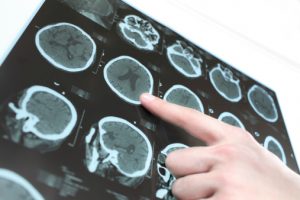
Excess iron is commonly found in the brains of individuals with Parkinson’s disease, but it is not fully understood how excess iron damages neurons in Parkinson’s disease (PD). Researchers from the Andersen lab at the Buck Institute found that damage occurs from an impairment of lysosome, which is an organelle that acts as a cellular recycling center for damaged proteins. The researchers note that the impairment allows excess iron to escape into the neurons where it causes damaging oxidative stress.
Lysosomes play a key role in autophagy, a process in which damaged proteins are broken down and recycled so new ones can be built and take their place. With age, lysosomes’ ability to partake in autophagy slows down, resulting in the build-up.
Senior scientist Julie K. Andersen said, “It’s recently been realized that one of the most important functions of the lysosome is to store iron in a place in the cell where it is not accessible to participate in toxic oxidative stress-producing reactions. Now we have demonstrated that a mutation in a lysosomal gene results in the toxic release of iron into the cell resulting in neuronal cell death.”
The research involved a mutation in a gene – ATP13A2 – which is associated with the Kufor-Rakeb syndrome, a rare form of Parkinson’s disease with early onset. When the researchers knocked out ATP13A2, the lysosome was unable to maintain the iron balance within the cell.
Andersen added, “Mutations in this same gene have also been recently linked to sporadic forms of PD. This suggests that age-related impairments in lysosomal function that impact the ability of neurons to maintain a healthy balance of iron are part of what underlies the presentation of PD in the general population.”
“The issue with iron chelation [form of therapy for iron overload] is that it’s a sledge hammer — it pulls iron from the cells indiscriminately and iron is needed throughout the body for many biological functions. Now we have a more specific target that we can hit with a smaller hammer, which could allow us to selectively impact iron toxicity within the affected neurons,” concluded Andersen.
Solving the mysteries of movement to treat Parkinson’s disease
Movement and motor skills become negatively affected in Parkinson’s disease, making it more difficult to walk and perform normal daily tasks as the disease progresses. In PD, the operation of two pathways that normally work together to create seamless movements is disrupted, making the initiation of movement difficult as a result. Up until now, how the imbalance between the two pathways occurs has been a mystery.
First author Anatol Kreitzer said, “This study provides strong evidence for a mechanism by which the stop pathway overcomes the go pathway in Parkinson’s disease. Our findings implicate the thalamus in the development of the disease, an area of the brain that has received relatively little attention in Parkinson’s research. Several studies have targeted the thalamus with deep brain stimulation to treat Parkinson’s, but the region’s role in the disease was not well established. Our findings finally provide a clear picture of how the thalamus can imbalance neural circuits and suppress movement in this condition.”
In a second study, also carried out by Kreitzer, researchers discovered that the stop and go pathways linked to thalamus control movement through the regulation of a group of nerve cells in the brainstem connecting the brain and the spinal cord.
Kreitzer said, “This is the first time we have been able to demonstrate how the go and stop pathways regulate locomotion. We show a very precise connection from the basal ganglia to the brainstem that controls movement.”
“In order to understand why walking is particularly disrupted in Parkinson’s disease, we need to map out the circuitry that controls locomotion. Our study shows that a specific set of neurons in the brainstem are both necessary and sufficient to initiate locomotion. This finding could open the door for new treatment targets to help Parkinson’s patients walk more easily,” concluded Kritzer.
Related Reading:
Scientists identify a new factor in Parkinson’s disease
A team of researchers from the Boston University School of Medicine (BUSM) have identified a hitherto unknown cellular defect in patients suffering from idiopathic Parkinson’s disease. They also discovered a string of pathological events that can either trigger premature death of certain cerebral neurons or even accelerate the process. Continue reading…
The breakthrough saliva test for Parkinson’s disease
Parkinson’s disease is a neurodegenerative disorder that affects elderly adults and is characterized by the occurrence of tremors, slow mobility, and a peculiar walk in which the back is usually arched and the head positioned forward. Although Parkinson’s disease commonly affects the elderly, the symptoms of this condition may develop by the age of 50. Continue reading…
Sources:
http://www.buckinstitute.org/buck-news/connection-between-excess-iron-and-parkinsons-disease
http://www.jneurosci.org/content/36/4/1086
https://www.sciencedaily.com/releases/2016/01/160128155004.htm